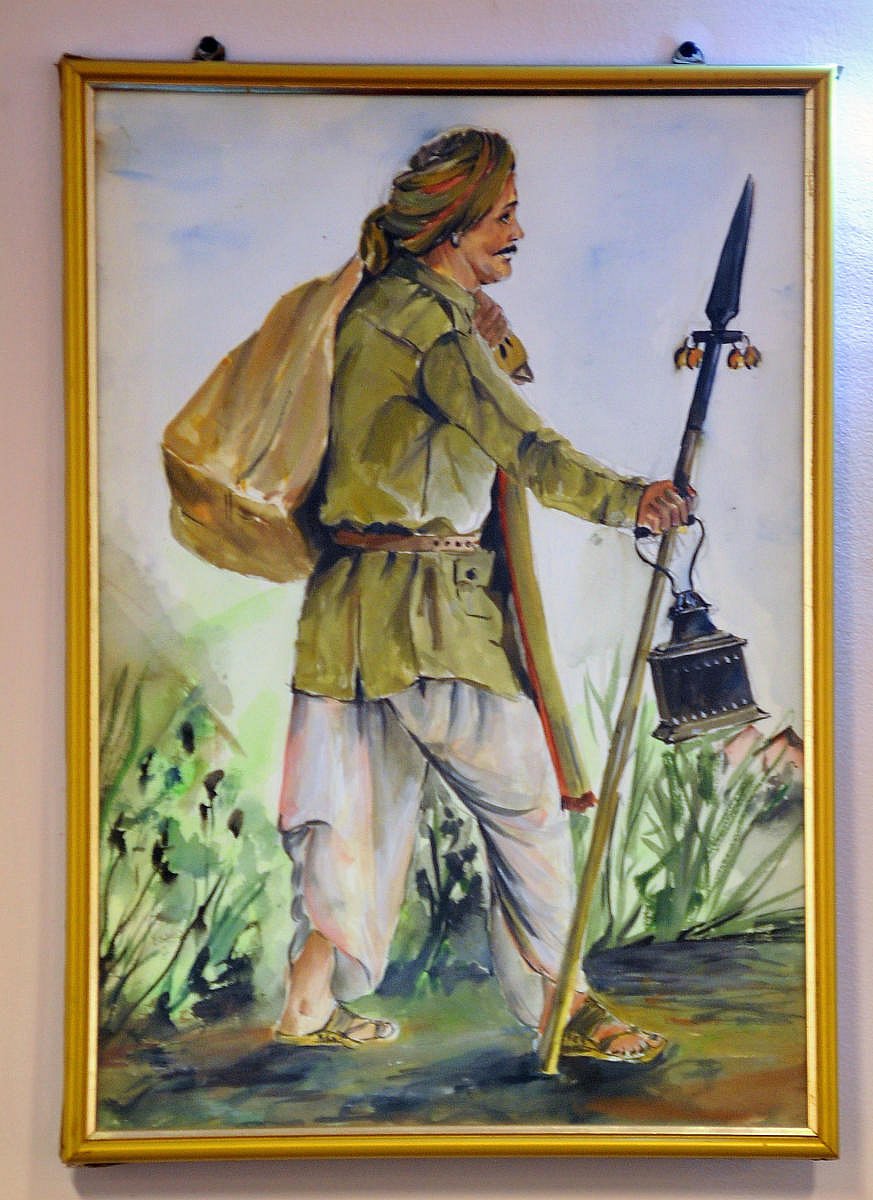
Why a lone spear finds place in the Museum of Communication or Sandesh, Bengaluru becomes clear only when it’s imagined with two other objects on display: a sack and a lantern. Together, they form the ensemble of a Runner.

Runners were mail messengers who prevailed before faster modes of delivery like bullock carts and bicycles entered the postal service. They walked, sometimes ran, for kilometres at a stretch to deliver mail.
Although not exclusive to India, Mail Runners formed a cadre in the postal department established by the Princely Mysore State in the 17th century, according to historical records.
The astute and inventive Mysore King Chikka Devaraja Wodeyar brought into force 18 departments or cutcherries in the 17th century. Of them, two were assigned to post or ‘anche’ – the Behina Chavadi (Department of Post Office), meant for government or official correspondence, and Nirupa Chavadi, where other letters sent and received. Espionage, too, was part of this department.
The book Mysore Anche states that this postal service reached its peak under the British rule (1831-81). It estimates that they were 200 post offices that covered 2295 Miles Anche Mail Route.
In 1867, Mysore Anche had 1511 Duffedars, Peons and Runners. By 1882, the Runner miles was 2293. The efficient Mysore Anche was merged with Imperial Post Office in 1889.
However, the postal ensemble is more a stamp of rural post-offices, points out Charles Lobo, Chief Postmaster General, Karnataka. “The runners travelled through forests. And if you notice the spear, it has bells; so, the noise kept wild animals away. At one point, drums were used to shoo away animals as well. In villages, the same jingle marked the arrival of mail, a matter of much anticipation,” he adds.
“It was also a relay and two-way system. The exchange point could be a post-office or a road. Say, a runner came from Channapatna; he would exchange his mail bag with the runner waiting at Bidadi. They had schedules and fixed routes,” points out Charles Lobo.
Jyotsna Kamat, a retired station director, All India Radio reminisces when her father, Ganesh Rao Burde, was a post-master in a Gokarna village 75 years ago. He sent out mail that arrived from the main post office. He had to deliver them to the villages around through Runners.
“Their journeys were hazardous. Roads were few; there were just pathways that cut through forests. They walked maybe 5-8 km at a stretch. During incessant monsoon rains, their journeys were more treacherous. They camped and they crossed rivers using local boats. They hardly got 30 to 40 rupees per month for the service,” she says.
She also remembers Puttu Fernandes, a Runner who tickled and intrigued her and her brother as kids with his wild tales of postal journeys through forests, and “how his voice did a better job of scaring wild animals than the noise from the spear bells.”
She jests, “Of course, this is a dead story now.” Not communication, though.